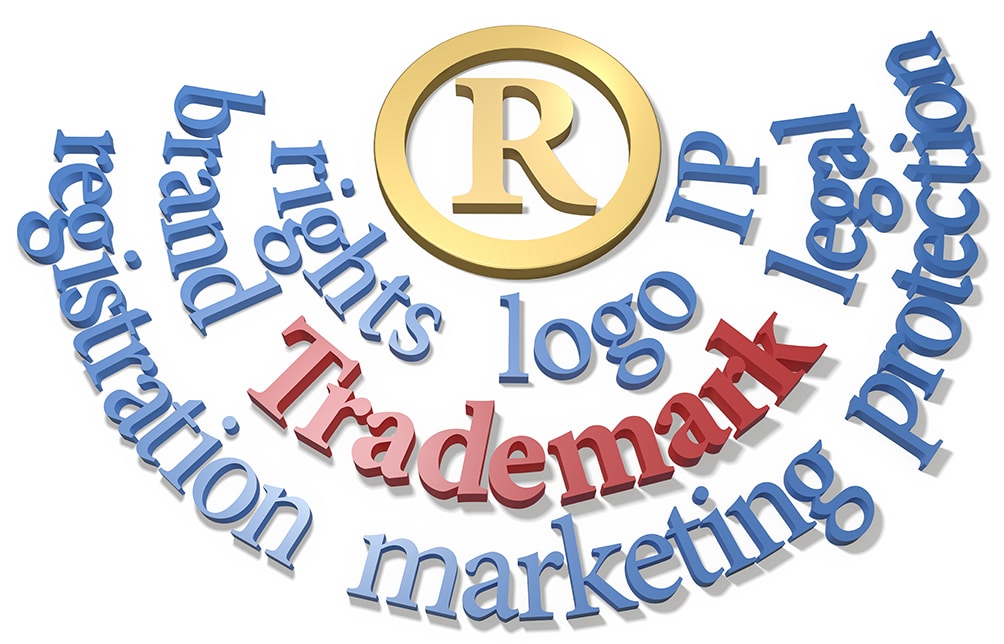Empowering Innovation with Legal Expertise
Trademark Symbols
How to use the trademark symbols properly.
Overview of Trademark Symbols
Proper use of trademark symbols helps protect your intellectual property and communicates the status of your marks to the public. This guide explains the three main trademark symbols and when to use each one.
Trademark Symbols in Detail
Registered Trademark Symbol (®)
When to use: Only for trademarks that have been officially registered with the United States Patent and Trademark Office (USPTO) or other national trademark office.
Example:
Microsoft® Windows® 11
Nike® Air Jordan®
Legal significance: Using the ® symbol puts the public on notice that your mark is registered and protected under federal trademark law, which provides significant legal advantages if infringement occurs.
Unregistered Trademark Symbol (™)
When to use: For trademarks that are being used in commerce but haven't been registered with the USPTO. This includes marks for which registration is pending or marks you're claiming as your intellectual property under common law.
Example:
iPhone™ (before it was registered)
Local Business Name™
Legal significance: The ™ symbol indicates that you are claiming rights to the mark under common law, which provides some protection based on actual use in commerce, though not as strong as federal registration.
Service Mark Symbol (℠)
When to use: For unregistered marks that represent services rather than physical goods. Similar to ™, but specifically for service providers.
Example:
Cloud Computing Services℠
Legal Consulting℠
Legal significance: Like the ™ symbol, ℠ indicates that you are claiming common law rights to a service mark. Once registered with the USPTO, you would use the ® symbol instead.
Note: In practice, many businesses use ™ for both goods and services, as it's more widely recognized. The ℠ symbol is less common but more precise for service-based businesses.
Correct Placement of Trademark Symbols
Proper placement of trademark symbols is important for both legal protection and visual presentation:
- Place the symbol in superscript (raised) position
- Position immediately after the mark with no space between
- Use the symbol on the most prominent or first appearance of the mark in a document
- Subsequent mentions of the mark in the same document may omit the symbol
✓ Correct Usage
Apple® products are known for their quality.
Visit the new Starbucks™ location downtown.
Google® (first mention)
Google (subsequent mentions)
✗ Incorrect Usage
Apple ® products (space before symbol)
STARBUCKS™ COFFEE (not needed on every mention)
®Google (symbol before the mark)
Google(®) (symbol in parentheses)
International Considerations
Trademark protection and symbol usage vary by country:
| Country/Region | Symbol Usage Notes |
|---|---|
| United States | ® only for federally registered marks; ™ and ℠ for unregistered marks |
| European Union | ® symbol for marks registered with the EUIPO; ™ symbol is recognized but not legally required |
| Canada | Similar to U.S.; ® for registered marks with CIPO; ™ for unregistered |
| China | Uses ® for registered marks; also uses the Chinese characters "注册商标" (registered trademark) |
| Japan | Has its own symbol "®" but enclosed in a circle; international symbols also recognized |
Common Questions
Do I need to use a trademark symbol?
While not legally required in the U.S., using appropriate trademark symbols provides several benefits:
- Puts the public on notice of your trademark claim
- May deter potential infringers
- Can help establish your intent to protect the mark
- May be important for claiming damages in infringement cases
When should I stop using ™ and start using ®?
You should switch from ™ to ® only after your trademark has been officially registered with the USPTO or other national trademark office. This typically happens when:
- You receive your registration certificate
- Your mark appears on the Principal Register of the USPTO
- The registration process is fully complete (not just when you've filed an application)
Do I need to use the symbol every time I mention my trademark?
No. The general practice is to use the appropriate symbol:
- On the first or most prominent mention of the mark in a document
- In headlines and headings where the mark appears
- Not necessary on every mention within the same document or webpage
- More frequently in marketing materials than in detailed text
Digital Usage Considerations
Website and Social Media
For digital platforms, follow these best practices:
- Include the appropriate symbol in website headers, footers, and product pages
- Consider adding a trademark notice in your website's legal section
- Use symbols in social media profiles and important posts
- For SEO purposes, include trademark terms in meta tags and descriptions
Domain Names and URLs
Trademark symbols are not typically used in domain names or URLs, but you should:
- Consider registering domains that include your trademark
- Use appropriate symbols on the website content, not in the URL itself
- Include trademark notices in website footers


